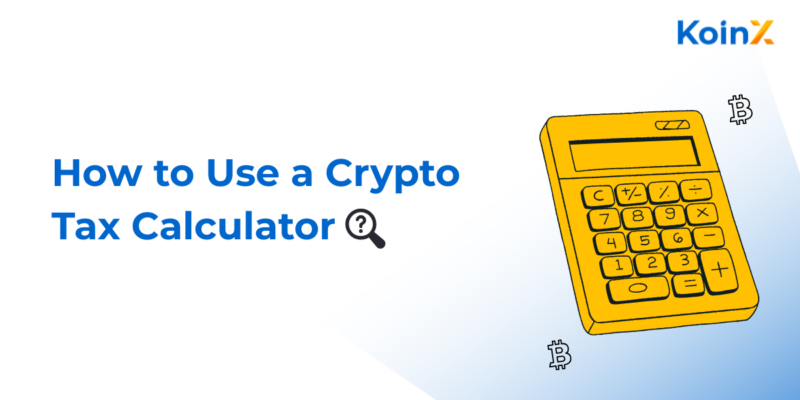
Blockchain trading is revolutionizing the financial landscape by introducing a decentralised and transparent approach to buying and selling assets.
This article explores the fundamentals of blockchain trading, detailing how it operates, its advantages, and the risks involved.
It highlights various trading types and cryptocurrencies, provides tips for beginners, and discusses common pitfalls to avoid.
As we look to the future of blockchain trading, discover its potential to reshape finance for businesses and consumers alike.
What is Blockchain Trading?
Blockchain trading encompasses the process of buying and selling cryptocurrencies, such as Bitcoin, through secure and decentralised systems enabled by blockchain technology. This innovative digital ledger technology promotes transparency and trust in financial transactions by providing immutable records of all transaction data.
Blockchain trading facilitates peer-to-peer exchanges, thereby eliminating the necessity for traditional third-party payment methods, while also enhancing data security through cryptographic techniques. The emergence of decentralised finance (DeFi) has significantly influenced the manner in which individuals and financial institutions interact with cryptocurrencies, establishing it as a crucial element of contemporary financial ecosystems.
At the heart of this trading paradigm are both public and private blockchains, which serve distinct and essential functions in enabling effective transactions and safeguarding sensitive information. Cryptocurrency exchanges operate as marketplaces for trading these digital assets, playing a vital role in facilitating liquidity and price discovery.
Furthermore, digital signatures enhance security by verifying the identities of the parties involved, ensuring that transactions are both secure and authentic.
As blockchain trading continues to expand, traditional financial institutions are reassessing their strategies, resulting in a transformation of online banking and the overall financial landscape. This evolution is paving the way for new opportunities for innovation and efficiency within the industry.
How Does Blockchain Trading Work?
Blockchain trading functions through a sophisticated network of transactions recorded on a digital ledger. Each transaction is verified by a network of nodes utilising consensus algorithms, such as the proof of work mechanism. This methodology ensures that all transaction records remain accurate and current, enabling users to trade cryptocurrencies, such as Bitcoin, in real-time with a high degree of security.
When a transaction is initiated, it progresses through various stages, including mining, during which miners validate and confirm the transaction before adding it to the blockchain. This results in an immutable record that enhances security and fosters trust in the trading process. Each participating node plays a critical role in this ecosystem by maintaining a complete copy of the entire blockchain and continually communicating with other nodes to achieve consensus on the transaction history.
Consequently, when a miner successfully verifies a block of transactions, this achievement is disseminated throughout the network, ensuring that every node updates its records accordingly. The significance of transaction confirmations is paramount; each confirmation strengthens the legitimacy of the transaction, establishing a barrier against potential fraud.
Consensus algorithms, such as proof of stake, present alternative mechanisms to ensure network integrity while promoting transparency and security across trading operations. By leveraging these intricate processes, blockchain technology offers a resilient framework for reliable and decentralised trading.
Advantages of Blockchain Trading
Blockchain trading offers numerous advantages that render it an appealing choice for investors and traders alike, primarily due to its inherent transparency and security features. By leveraging blockchain technology, participants benefit from a decentralised system that prioritises data security, enabling financial transactions to be conducted with a high degree of trust.
The immutable records generated by blockchain technology effectively prevent data manipulation, while the automation capabilities provided by smart contracts streamline the trading process, facilitating quicker transaction execution and minimising reliance on third-party services.

Furthermore, blockchain trading eliminates the intermediary fees typically associated with traditional financial systems, thereby enhancing its attractiveness. The employment of cryptographic techniques ensures that sensitive information remains secure, significantly reducing the risk of fraud and cyberattacks.
This characteristic is particularly important in the context of decentralised finance (DeFi), where blockchain applications give the power to users to engage directly in financial transactions without the involvement of banks or brokers.
Prominent examples of successful blockchain implementations can be observed in the online banking sector, where customers benefit from instant wire transfers that are both cost-effective and secure. Similarly, industries such as supply chain management have adopted blockchain technology to monitor goods in real time, thereby enhancing transparency and accountability, which revolutionises operational practices within businesses.
Risks and Challenges of Blockchain Trading
While blockchain trading offers numerous advantages, it is accompanied by inherent risks and challenges that prospective traders must carefully consider. The rapidly evolving cryptocurrency landscape may lead to scalability issues, where networks struggle to efficiently manage increased transaction volumes, resulting in potential delays and higher transaction fees.
Additionally, the digital nature of blockchain trading raises cybersecurity concerns, as malicious actors may exploit vulnerabilities, leading to data manipulation and compromising digital identities. The absence of comprehensive regulations surrounding cryptocurrencies can create uncertainty for traders, particularly when engaging with financial institutions.
These challenges, coupled with the volatile nature of cryptocurrency prices, may result in significant financial losses for traders who are not adequately prepared.
To effectively navigate these risks, individuals should adopt best practices including:
- Conducting thorough research
- Using secure wallets
- Understanding the evolving legal landscape surrounding digital assets
Staying informed about regulatory changes can assist in mitigating potential legal issues, while implementing risk management strategies, such as diversification, can help balance exposure to market fluctuations.
By being proactive and well-informed, traders can better protect their investments and enhance their overall trading experience.
Different Types of Blockchain Trading
Blockchain trading can be classified into various categories, each possessing distinct characteristics that address different use cases and market requirements. Public blockchains facilitate open trading and allow unrestricted participation, making them particularly suitable for cryptocurrencies such as Bitcoin. In contrast, private blockchains limit participation to authorised entities, thereby enhancing security for sensitive transactions. Consortium blockchains present a balanced approach, wherein multiple organisations collaborate towards common objectives, while hybrid blockchains integrate elements from both public and private systems. Additionally, sidechains enable transactions across different blockchain networks, thereby expanding opportunities for trading and transaction authorisation.
These frameworks are pivotal in determining the mechanics of trading and the manner in which users engage with cryptocurrencies. Public blockchains typically offer greater transparency and decentralisation, which can attract a diverse range of users; however, they may also face scalability challenges during periods of high trading volume. Conversely, private blockchains excel in terms of transaction speed and confidentiality, rendering them more suitable for enterprise-level operations, albeit at the potential cost of limiting broader user participation.
Consortium blockchains often bridge these gaps by enhancing efficiency while maintaining a degree of shared governance. The design of each framework ultimately influences the transaction authorisation processes, impacting the speed and security with which trades are executed, while ensuring that users possess the appropriate access to a trading environment tailored to their specific needs.
Understanding Cryptocurrencies
Cryptocurrencies have emerged as a transformative financial instrument, with Bitcoin and Ethereum at the forefront, fundamentally altering the approach of individuals and financial institutions to transactions. Utilising blockchain technology, these digital currencies rely on decentralised ledgers to maintain secure and transparent transaction records, thereby facilitating peer-to-peer exchanges without the need for intermediaries.

The rise of decentralised finance (DeFi) has further accelerated the adoption of cryptocurrencies, as they provide innovative solutions for financial transactions, lending, and digital identity verification, thereby reshaping the future of finance.
As this new form of currency continues to develop, characteristics such as cryptographic security, scarcity, and programmability distinguish it from traditional forms of money. Major cryptocurrencies, particularly Bitcoin, are often regarded as digital gold, while Ethereum plays a vital role in supporting decentralised applications through the implementation of smart contracts.
This evolution in monetary systems is prompting financial institutions to reassess their existing frameworks to adapt to the increasing demand for faster and more efficient banking solutions. The disruption caused by cryptocurrencies is evident in their capacity to give the power to individuals, providing financial independence and inclusivity to those who have historically been underserved by conventional banking systems.
How to Get Started with Blockchain Trading
Engaging in blockchain trading requires adherence to a series of systematic steps to ensure a seamless and user-friendly experience for both novice and experienced traders. Initially, individuals should select a reputable cryptocurrency exchange that accommodates their preferred digital assets and offers a secure platform for transactions.
Establishing a digital wallet is essential for managing cryptocurrencies, as it enables traders to securely store their digital identities while facilitating easy access to transaction records and, where applicable, the mining process. A thorough understanding of the fundamentals of blockchain technology will give the power to traders to make informed decisions within the market.
It is crucial to become acquainted with market fundamentals, including price charts, trading pairs, and market trends. This knowledge will aid in developing sound trading strategies and assist in navigating market volatility effectively.
As trading activities progress, the implementation of robust security practices becomes imperative. Traders should activate two-factor authentication on their accounts, consistently update their passwords, and utilise hardware wallets for the secure storage of substantial amounts of cryptocurrency.
By following these steps, traders not only safeguard their assets but also enhance their confidence and competence within the dynamic environment of blockchain trading.
Tips for Successful Blockchain Trading
Successful blockchain trading necessitates a combination of knowledge, strategic planning, and a thorough understanding of the underlying technology associated with cryptocurrencies. It is imperative that traders prioritise data security by implementing strong digital signatures and multi-factor authentication to safeguard their financial transactions.
Establishing trust through meticulous research and analysis of market trends is essential for making informed trading decisions. By leveraging the advantages of decentralisation, traders can effectively navigate market volatility and develop a more resilient trading strategy.
To further enhance their trading success, individuals should adopt comprehensive risk management strategies, which encompass setting stop-loss orders and clearly defining the amount of capital to risk on each trade. Continuous learning is vital, given the rapid evolution of the blockchain landscape; remaining informed about the latest developments, techniques, and market sentiments can provide a significant competitive advantage.
Additionally, utilising advanced analytical tools can assist traders in effectively interpreting data and identifying potential trends. Engaging with the community through forums and discussion groups can foster valuable connections and facilitate the sharing of information, ultimately enhancing both knowledge and overall trading performance.
Common Mistakes to Avoid in Blockchain Trading
In the rapidly evolving landscape of blockchain trading, certain common mistakes can impede success and result in substantial losses for traders. One prominent error involves insufficient verification of transaction records, which may lead to data manipulation and compromised digital identities.
Additionally, a lack of awareness regarding regulations governing cryptocurrencies can expose traders to legal risks and diminish their confidence in the system. Therefore, it is essential for traders to engage in thorough research and maintain vigilance to circumvent these pitfalls.
Many traders frequently underestimate the significance of conducting a comprehensive risk assessment prior to making investment decisions. This oversight can result in excessive exposure to volatile assets, exacerbating losses during market downturns.
Traders should prioritize due diligence by analysing market trends, staying informed about the latest developments, and understanding the technology underlying the assets they choose to invest in.
Adhering to regulatory guidelines is also imperative, as it not only promotes ethical trading practices but also safeguards traders against potential scams and market manipulation.
Establishing a trading plan that includes well-defined entry and exit strategies can significantly mitigate these common mistakes, ensuring a more informed and secure trading experience.
The Future of Blockchain Trading
The future of blockchain trading presents significant potential, propelled by ongoing advancements in blockchain technology and the increasing acceptance of cryptocurrencies as legitimate financial instruments. As decentralised systems continue to evolve, we can anticipate innovations such as smart contracts that automate and enhance trading processes, thereby providing greater efficiency and transparency.
Financial institutions are progressively recognising the advantages of integrating blockchain solutions, which could alleviate scalability constraints and fundamentally reshape the landscape of trading and investment opportunities in the coming years.
With the growing incorporation of artificial intelligence into blockchain systems, traders can benefit from enhanced analytics, predictive modelling, and automated trading strategies, leading to more knowledge-based decision making. As scalability issues are effectively addressed, it is likely that we will see a higher volume of transactions processed simultaneously, reducing bottlenecks and improving the overall user experience.
Additionally, evolving regulatory frameworks have the potential to foster trust and stability within these markets, thereby encouraging wider adoption among traditional financial entities. These transformative changes are poised to not only redefine trading paradigms but also give the power to decentralised finance, contributing to the establishment of a more inclusive and efficient financial ecosystem for all participants.
Is Blockchain Trading the Future of Finance?
The inquiry into whether blockchain trading represents the future of finance is becoming increasingly relevant as technological advancements continue to reshape financial systems. With its distinctive advantages of transparency, trust, and decentralisation, blockchain technology possesses the potential to transform traditional financial paradigms by facilitating peer-to-peer transactions without the need for intermediaries.
As cryptocurrencies gain popularity and decentralised finance (DeFi) solutions are developed, financial institutions are confronted with the imperative to adapt to a new landscape where digital identity and secure transactions are of utmost importance.
The transition towards blockchain trading could significantly disrupt established financial frameworks, potentially lowering costs and increasing transaction speeds for users on a global scale. In contrast to conventional systems that often impose barriers to entry, this innovative approach offers opportunities for enhanced accessibility, enabling underserved populations to engage in the financial ecosystem.
Traditional financial institutions may need to reevaluate their roles, transitioning from gatekeepers to facilitators of innovation.
In this evolving landscape, the give the power toment of users through a decentralised model has the potential to foster greater financial literacy and independence, ultimately contributing to a more inclusive financial future.
What Are the Key Components of Blockchain Technology?
The key components of blockchain technology encompass the digital ledger, consensus algorithms, cryptographic techniques, and smart contracts, each of which plays a critical role in ensuring the functionality and security of the blockchain ecosystem.
When these elements operate in conjunction, they establish a robust framework that fosters confidence among users. The digital ledger not only records transactions but also provides transparency, enabling all participants to independently verify the data.
Consensus algorithms, such as proof of stake, further enhance this trust by ensuring that all network participants reach a consensus on the validity of transactions, rendering manipulation virtually impossible. Concurrently, cryptographic techniques protect user identities and transactional details, thereby creating an environment in which sensitive information remains secure.
Smart contracts, meanwhile, optimise operations across various sectors by facilitating automation in finance, supply chain management, and healthcare. For example, in supply chains, smart contracts can automatically trigger payments upon delivery, minimising delays and enhancing reliability. This demonstrates their essential role in contemporary transactional environments.
How Is Blockchain Trading Different from Traditional Trading?
Blockchain trading represents a significant departure from traditional trading methods by utilising decentralised systems that emphasise transparency and trust, thereby fundamentally transforming the conduct of transactions. Unlike traditional trading, which frequently depends on intermediaries such as brokers and banks, blockchain trading facilitates peer-to-peer transactions directly on a secure digital ledger.
This transition not only lowers transaction costs but also enhances security and accelerates the trading process, positioning it as a more efficient alternative for trading cryptocurrencies.
The intrinsic characteristics of blockchain technology provide a level of traceability and transparency that traditional trading platforms find challenging to replicate. Every transaction is recorded on the blockchain, establishing a tamper-proof history that participants can readily verify.
This transparency fosters trust among users, as they have the ability to independently confirm the legitimacy of each trade without relying on third-party assurances. The removal of intermediaries also reduces delays and the potential for human error, contributing to a more seamless trading experience.
These advantages clearly demonstrate why an increasing number of traders are opting for blockchain technology over conventional trading methods.
What Are the Most Popular Cryptocurrencies for Trading?
Among the numerous cryptocurrencies available for trading, Bitcoin and Ethereum are distinguished as the most prominent options, each offering unique features and market dynamics that attract both traders and investors. Bitcoin, often recognised as the original cryptocurrency, functions primarily as a digital store of value. In contrast, Ethereum introduces smart contracts, enabling the execution of decentralised applications on its platform. These cryptocurrencies not only transform financial transactions but also significantly influence the strategies of financial institutions as they adapt to the evolving landscape of digital currencies.
Plus Bitcoin and Ethereum, other notable cryptocurrencies such as Binance Coin and Cardano are gaining attention due to their distinctive value propositions. Binance Coin, for example, supports the Binance exchange and offers users trading fee discounts, while Cardano seeks to provide secure and scalable smart contracts through a research-driven approach.
The market capitalisation of these digital assets continues to increase, reflecting a growing interest among traders, and their trading volumes indicate substantial activity within the trading ecosystem. As more financial institutions investigate these opportunities, the cryptocurrency sector is becoming increasingly essential to contemporary portfolio diversification and investment strategies.
What Are the Regulations and Laws Surrounding Blockchain Trading?
The regulatory landscape surrounding blockchain trading is intricate and varies significantly across different jurisdictions, presenting challenges for both traders and financial institutions. As cryptocurrencies gain prominence, governments and regulatory bodies are actively working to establish comprehensive laws that govern their use, with a focus on compliance, data security, and consumer protection. It is essential for traders to understand these regulations to navigate the legal implications of their activities and ensure that their digital identities and transactions conform to the required standards.
These legal frameworks often encompass stringent anti-money laundering (AML) and know-your-customer (KYC) requirements, which mandate that individuals and organizations verify their identities prior to engaging in trading activities. Given the dynamic nature of cryptocurrencies, regulations can change rapidly, potentially leaving traders unprepared if they do not remain informed.
For many, the challenge extends beyond mere compliance with existing laws; it also involves anticipating future regulatory trends. Consequently, it is imperative for traders to implement adaptive strategies, including regular training on compliance protocols and harnessing technology to facilitate adherence to regulations. This approach ensures a safe and secure trading experience within the continuously evolving blockchain environment.
How Can Blockchain Trading Benefit Businesses and Consumers?
Blockchain trading presents numerous advantages for both businesses and consumers, fundamentally reshaping financial transactions through improved data security, transparency, and trust. By leveraging blockchain technology, businesses can optimise their operations, reduce costs associated with conventional payment methods, and access a global market of cryptocurrency users. For consumers, blockchain trading opens new investment opportunities, provides greater control over digital identities, and ensures that their transactions are secure and verifiable.
Various sectors are benefiting from these advantages in distinct ways.
- In the e-commerce sector, platforms are implementing blockchain for secure, decentralised payment systems. A notable example is Overstock.com, which enables customers to make purchases using Bitcoin.
- In the financial sector, banks and institutions are utilising blockchain to accelerate cross-border payments, mitigate fraud, and enhance regulatory compliance. Ripple is one such example, having partnered with various banks to streamline international money transfers.
- Additionally, the supply chain management sector is greatly enhanced by blockchain’s traceability features. Companies such as IBM and Walmart are employing blockchain to ensure product authenticity and improve tracking, thereby increasing consumer confidence.
These examples underscore the transformative potential of blockchain trading across multiple industries.












